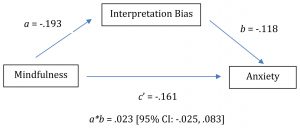Improve Doctor’s Performance and Well-Being with Mindfulness
By John M. de Castro, Ph.D.
“Anyone whose work involves immense human suffering needs to be aware of their inner life. The nature of the work that physicians do makes [them] more vulnerable to negative emotions or making errors,” – Ronald Epstein
Stress is epidemic in the western workplace with almost two thirds of workers reporting high levels of stress at work. In high stress occupations, like healthcare, burnout is all too prevalent. Burnout is the fatigue, cynicism, emotional exhaustion, sleep disruption, and professional inefficacy that comes with work-related stress. It is estimated that over 45% of healthcare workers experience burnout. It not only affects the healthcare providers personally, but also the patients, as it produces a loss of empathy and compassion.
Improving the psychological health of doctors has to be a priority. Contemplative practices have been shown to reduce the psychological and physiological responses to stress. Indeed, mindfulness has been shown to be helpful in treating and preventing burnout, increasing resilience, improving emotional regulation, and improving sleep. Hence, mindfulness may be a means to improve the performance and psychological health of doctors. Indeed, there have been a number of research studies on the topic. So, it makes sense to step back and summarize what has been found.
In today’s Research News article “The impact of mindfulness-based interventions on doctors’ well-being and performance: A systematic review.” (See summary below or view the full text of the study at: https://www.ncbi.nlm.nih.gov/pmc/articles/PMC7003865/), Scheepers and colleagues review and summarize the published research studies on the effects of mindfulness training on the performance and well-being of doctors. They report on 24 published studies.
They report that the published studies found that mindfulness-based trainings significantly improved the performance and well-being of doctors. This was true particularly for group based mindfulness trainings and for trainings such as Mindfulness-Based Stress Reduction (MBSR) and Mindfulness-Based Cognitive Therapy (MBCT) that contained multiple elements of mindfulness trainings. There are “five different elements: (i) integration of mindfulness theory; (ii) provision of didactic information on mindfulness; (iii) development of self‐awareness about thoughts, feelings and bodily sensations; (iv) promotion of attentive and behavioural self‐regulation and positive qualities (curiosity, joy, compassion), and (v) training of meditation practice.” These positive effects were reported across different educational and hospital settings and equally for residents and specialists.
The accumulating evidence makes a convincing case for the efficacy of mindfulness-based trainings to improve the performance and well-being of physicians. This should improve their impacts on their patients’ health and should reduce the likelihood of eventual burnout. Although, the review did not focus on mechanisms it is likely that mindfulness has these effects by improving the doctors’ ability to withstand stress and improve their ability to effectively deal with their emotions.
So, improve doctor’s performance and well-being with mindfulness.
“Mindfulness is especially suited to physicians, because it can help counteract the worrying, perfectionism and self-judgment that are so common among doctors.” – WellMD
CMCS – Center for Mindfulness and Contemplative Studies
This and other Contemplative Studies posts are also available on Google+ https://plus.google.com/106784388191201299496/posts and on Twitter @MindfulResearch
Study Summary
Scheepers, R. A., Emke, H., Epstein, R. M., & Lombarts, K. (2020). The impact of mindfulness-based interventions on doctors’ well-being and performance: A systematic review. Medical education, 54(2), 138–149. https://doi.org/10.1111/medu.14020
Abstract
Objectives
The well‐being of doctors is at risk, as evidenced by high burnout rates amongst doctors around the world. Alarmingly, burned‐out doctors are more likely to exhibit low levels of professionalism and provide suboptimal patient care. Research suggests that burnout and the well‐being of doctors can be improved by mindfulness‐based interventions (MBIs). Furthermore, MBIs may improve doctors’ performance (eg in empathy). However, there are no published systematic reviews that clarify the effects of MBIs on doctor well‐being or performance to inform future research and professional development programmes. We therefore systematically reviewed and narratively synthesised findings on the impacts of MBIs on doctors’ well‐being and performance.
Methods
We searched PubMed and PsycINFO from inception to 9 May 2018 and independently reviewed studies investigating the effects of MBIs on doctor well‐being or performance. We systematically extracted data and assessed study quality according to the Medical Education Research Study Quality Instrument (MERSQI), and narratively reported study findings.
Results
We retrieved a total of 934 articles, of which 24 studies met our criteria; these included randomised, (un)controlled or qualitative studies of average quality. Effects varied across MBIs with different training contents or formats: MBIs including essential mindfulness training elements, or employing group‐based training, mostly showed positive effects on the well‐being or performance of doctors across different educational and hospital settings. Doctors perceived both benefits (enhanced self‐ and other‐understanding) and challenges (time limitations and feasibility) associated with MBIs. Findings were subject to the methodological limitations of studies (eg the use of self‐selected participants, lack of placebo interventions, use of self‐reported outcomes).
Conclusions
This review indicates that doctors can perceive positive impacts of MBIs on their well‐being and performance. However, the evidence was subject to methodological limitations and does not yet support the standardisation of MBIs in professional development programmes. Rather, health care organisations could consider including group‐based MBIs as voluntary modules for doctors with specific well‐being needs or ambitions regarding professional development.









